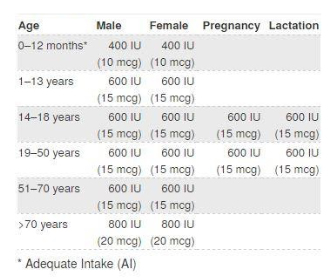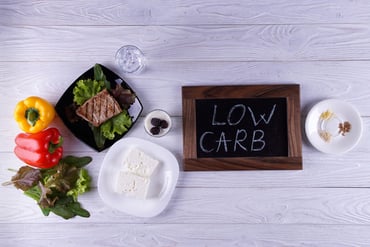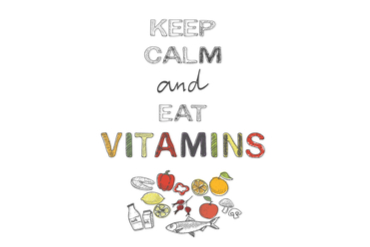It’s that time of year again when your calendar is filled with pool and boat parties! What better time is there to show off your sun-kissed skin, escape from the hectic city, and enjoy the little bit of nature that Hong Kong has to offer. With the summer sunshine in full swing, I bet you’ve heard your parents nagging you to “always put on sunblock!”. Sunblock does an amazing job to protect your skin against UV damage, but unfortunately decrease the amount of UV radiation received, thus affecting Vitamin D synthesised by our body.
What is Vitamin D for?
The primary function for vitamin D is to strengthen your bones and prevent osteoporosis (when your bones become brittle and prone to breaking). But how exactly does it work? And why do we hear that calcium and phosphorous are also important for bone health? Our bones are made up of a mineral crystals that contain both calcium and phosphorous, and vitamin D is the key we need to absorb these minerals from our food into our bodies. That’s why we could develop brittle bones and bone pain if our bodies are deficient in vitamin D.
But that’s not all that Vitamin D is good for – we also need it for muscle strength, healthy teeth, good immune system function!
Where can we get Vitamin D from?
As humans, we absorb vitamin D through our diet, supplements and from the sun. However, vitamin D is naturally found in a limited amount of food in our diets, such as fatty fish and dairy products. For those of us who don’t incorporate enough of these foods into our diet or may be lactose intolerant, we would run the risk of having low vitamin D levels in our body.
Aside from dietary sources, our skin is also capable of synthesizing vitamin D when it is triggered by sunlight. Depending on sunlight intensity and the level of pigment in your skin, sitting in the sun for 5 – 30 minutes twice per week is generally enough for our bodies to produce adequate amounts of vitamin D (Holick, 2007)
How much Vitamin D do I need?
The table below shows how much Vitamin D you may need, it is based on your age, gender, and whether you are pregnant or lactating. The amount we require is also set to based on the assumption of minimal sun exposure.

You may be thinking…how much exactly is 600 IU? Table 2 here shows some of the more common food sources that are high in Vitamin D:
| Food | IUs per serving |
| Salmon (sockeye), cooked, 3 ounces | 447 |
| Tuna fish, canned in water, drained, 3 ounces | 154 |
| Milk, nonfat, reduced fat, and whole, vitamin D-fortified, 1 cup | 115-124 |
| Yogurt, fortified with 20% of the DV for vitamin D, 6 ounces (more heavily fortified yogurts provide more of the DV) | 80 |
| Margarine, fortified, 1 tablespoon | 60 |
| Egg, 1 large (vitamin D is found in yolk) | 41 |
As you can see, not a whole lot of food contains enough Vitamin D, and we aren’t expecting you to eat salmon every day so that you can meet your requirement. That’s because many people meet at least some of the Vitamin D needs through some sun exposure. So even if your dietary intakes do not appear to be adequate, your overall vitamin D status may be very different as you may be receiving more sunlight than you think.
Take home message
It seems like your parents were right again when they talked about the importance of putting on sunblock. As much as sun exposure is good for our bone health in small doses, it’s very easy to get too much of a good thing in this case. The risk of getting skin cancer because you didn’t wear sunblock is much greater than the risk of having osteoporosis because you did wear it, especially if you eat a balanced diet or take supplements!
So next time when you go on your junk trip, have fun but also remember to wear your sunblock!
Reference:
Ensuring Bone Health for Men. (2016, June 17). Retrieved June 12, 2017, from http://www.eatright.org/resource/health/wellness/preventing-illness/bone-health-for-men
Holick, M. F. (2007). Vitamin D Deficiency. New England Journal of Medicine,357(3), 266-281. doi:10.1056/nejmra070553
How the sun and UV cause cancer. (2017, May 03). Retrieved June 11, 2017, from http://www.cancerresearchuk.org/about-cancer/causes-of-cancer/sun-uv-and-cancer/how-the-sun-and-uv-cause-cancer
Office of Dietary Supplements – Vitamin D. (n.d.). Retrieved June 11, 2017, from https://ods.od.nih.gov/factsheets/VitaminD-HealthProfessional/
Sunlight exposure and vitamin D advice – Health News. (2010, December 17). Retrieved June 11, 2017, from http://www.nhs.uk/news/2010/12December/Pages/sunlight-exposure-and-vitamin-d-advice.aspx
What Is Vitamin D? (2016, May.). Retrieved June 11, 2017, from https://www.eatright.org/food/vitamins-and-supplements/types-of-vitamins-and-nutrients/what-is-vitamin-d


